#indian religions
Explore tagged Tumblr posts
Text
Understanding Devotional Worship: A Path to Spiritual Fulfillment
Devotional worship is a profound practice that has been a part of human culture for centuries. It is a way for individuals to connect deeply with the divine, expressing their love, reverence, and faith. Whether you are new to this practice or seeking to deepen your understanding, this guide will provide insights into the essence of devotional worship and how platforms like omtvlive can enhance your spiritual journey.

What is Devotional Worship?
Devotional worship refers to acts of devotion directed towards a deity or higher power. These acts can include prayer, singing hymns, chanting mantras, meditating, and performing rituals. The purpose of devotional worship is to express love and gratitude to the divine, seek guidance, and find spiritual solace.
Benefits of Devotional Worship
Inner Peace: Engaging in devotional worship helps calm the mind and bring inner peace. It provides a break from daily stresses and allows individuals to focus on the divine presence.
Spiritual Growth: Regular practice fosters spiritual growth. It deepens one's faith, enhances understanding of spiritual principles, and strengthens the connection with the divine.
Emotional Well-Being: Devotional worship can be a source of comfort during challenging times. It helps in coping with emotions like fear, anxiety, and sadness by providing a sense of hope and reassurance.
Community Connection: Participating in devotional worship within a community can create a sense of belonging and support. It brings people together in a shared expression of faith and devotion.
Forms of Devotional Worship
Devotional worship can take many forms, each with its own unique practices and traditions. Here are some common forms:
Prayer: A fundamental aspect of devotional worship, prayer involves communicating with the divine. It can be a request for help, an expression of gratitude, or simply a way to feel closer to the higher power.
Chanting and Singing: Chanting mantras or singing hymns and bhajans are powerful ways to engage in devotional worship. The repetitive nature of chanting helps focus the mind and create a meditative state.
Meditation: Meditation is a silent form of devotional worship where individuals sit quietly, focus on the divine, and cultivate a sense of inner stillness and connection.
Rituals and Offerings: Performing rituals and making offerings are traditional practices in many religions. These acts symbolize devotion and reverence towards the deity.
Pilgrimages: Traveling to sacred sites and participating in religious festivals are also forms of devotional worship. These journeys often provide a deep sense of spiritual renewal.
Enhancing Devotional Worship with Omtvlive
In today’s digital age, accessing resources for devotional worship has become easier than ever. Platforms like omtvlive play a crucial role in bringing devotional content to people worldwide. Here’s how omtvlive can enhance your devotional worship experience:
Live Streaming: Omtvlive offers live streaming of religious ceremonies, prayers, and spiritual discourses. This allows you to participate in devotional worship from the comfort of your home, especially if you cannot visit a place of worship.
On-Demand Content: The platform provides a wide range of on-demand content, including recorded prayers, bhajans, and spiritual talks. You can access these resources anytime, making it convenient to incorporate devotional worship into your daily routine.
Community Engagement: Omtvlive fosters a sense of community by connecting viewers with like-minded individuals. You can participate in live chats, discussions, and virtual prayer sessions, creating a shared space for devotion and support.
Educational Resources: The platform offers educational content that helps deepen your understanding of various aspects of devotional worship. This can include explanations of rituals, the significance of festivals, and teachings from spiritual leaders.
Diverse Practices: Omtvlive caters to a wide range of religious and spiritual traditions. This diversity allows you to explore different forms of devotional worship and find what resonates most with your spiritual path.
Tips for Deepening Your Devotional Worship
If you want to deepen your devotional worship, consider these tips:
Consistency: Make devotional worship a regular part of your routine. Consistent practice helps cultivate a stronger connection with the divine.
Sincerity: Approach devotional worship with sincerity and an open heart. Genuine devotion enhances the spiritual experience.
Learn and Explore: Use platforms like omtvlive to learn about different practices and traditions. Exploring various forms of devotional worship can enrich your spiritual journey.
Create a Sacred Space: Designate a quiet, clean space in your home for devotional worship. This can help you focus and create a peaceful environment for your practice.
Connect with Others: Engage with your spiritual community, whether online through omtvlive or in person. Sharing your experiences and learning from others can be incredibly enriching.
Conclusion
Devotional worship is a beautiful and meaningful way to connect with the divine and nurture your spiritual growth. It offers numerous benefits, from inner peace to a stronger sense of community. Platforms like omtvlive make it easier than ever to access devotional content and enhance your practice. By incorporating devotional worship into your daily life and exploring the resources available through omtvlive, you can embark on a fulfilling spiritual journey filled with love, devotion, and enlightenment.
#vedic philosophy#classical hinduism#hindu philosophy#hindu religion philosophy#hindu vedanta#jnana yoga#advaita vedanta philosophy#advaita vedanta in hindi#vaishnava tradition#jain religion#tantric traditions#vedic religion#devotional worship#modern hinduism#vedic scriptures#spiritual realization#dharmic religions#indian religions
2 notes
·
View notes
Text
Understanding Classical Hinduism: A Journey Through Ancient Beliefs
Classical Hinduism is one of the oldest and most diverse religious traditions in the world. It encompasses a rich tapestry of beliefs, practices, and rituals that have evolved over thousands of years. This blog will guide you through the essential aspects of Classical Hinduism, shedding light on its core principles, major texts, and how it continues to influence people today. Along the way, we'll also touch on a resource called OMTVLive, which provides insightful content related to this ancient religion.

What is Classical Hinduism?
Classical Hinduism refers to the set of religious practices and philosophies that developed in ancient India. It is characterized by its deep spiritual teachings, extensive rituals, and a vast array of deities and myths. Unlike many other religions, Classical Hinduism does not have a single founder or a central text. Instead, it is a collection of diverse beliefs that have coalesced over centuries.
Major Texts of Classical Hinduism
The foundation of Classical Hinduism lies in its sacred texts, which are divided into two main categories: Shruti and Smriti. The Shruti texts, which include the Vedas and the Upanishads, are considered the most authoritative. They consist of hymns, prayers, and philosophical discussions. On the other hand, the Smriti texts are more accessible and include the epics like the Mahabharata and Ramayana, as well as the Puranas.
For those interested in exploring these texts further, resources like OMTVLive offer detailed explanations and analyses. OMTVLive provides content that delves into the meanings of these ancient scriptures and how they relate to contemporary life.
Key Beliefs of Classical Hinduism
Dharma: One of the core concepts in Classical Hinduism is Dharma, which refers to the moral order and duties that one must follow. This concept helps guide individuals in making ethical decisions and living a righteous life.
Karma: Another important belief is Karma, the principle of cause and effect. According to this belief, every action has consequences, and one's past actions influence their future experiences.
Moksha: The ultimate goal in Classical Hinduism is Moksha, or liberation from the cycle of rebirth (samsara). Achieving Moksha means attaining a state of eternal peace and unity with the divine.
Rituals and Practices
Classical Hinduism is known for its elaborate rituals and ceremonies. These rituals vary widely but often involve offerings to deities, chanting of mantras, and participation in festivals. Temples play a significant role in these practices, serving as places where individuals can worship and seek guidance.
OMTVLive offers a range of videos and articles that showcase various rituals and festivals in Classical Hinduism. These resources provide a vivid depiction of how these ancient practices are performed and their significance in the daily lives of practitioners.
Deities and Mythology
The pantheon of deities in Classical Hinduism is vast and includes gods and goddesses like Brahma, Vishnu, Shiva, Lakshmi, and Saraswati. Each deity represents different aspects of life and the universe, and devotees often worship specific deities based on their personal needs and goals.
The mythology surrounding these deities is rich and complex, with numerous stories that convey moral and spiritual lessons. OMTVLive is a valuable resource for those who wish to learn more about these myths and their meanings. The platform provides detailed explanations of various stories and their relevance to Classical Hinduism.
Modern Influence and Practice
Classical Hinduism is not just a historical tradition; it continues to influence millions of people around the world today. In modern India, Classical Hinduism shapes daily life, cultural practices, and national festivals. It also impacts the global Hindu diaspora, which maintains and adapts these ancient traditions in new contexts.
For a contemporary perspective on Classical Hinduism, OMTVLive offers modern interpretations and discussions that help bridge ancient practices with current lifestyles. This platform provides valuable insights into how Classical Hinduism is practiced and understood in today's world.
Conclusion
Classical Hinduism is a profound and intricate tradition that has shaped the spiritual and cultural landscape of India for millennia. Its teachings on Dharma, Karma, and Moksha offer valuable guidance for living a meaningful life. Through its sacred texts, rituals, and deities, Classical Hinduism provides a rich tapestry of beliefs that continue to resonate with people today.
For those interested in exploring Classical Hinduism further, OMTVLive serves as an excellent resource. It offers in-depth content that helps illuminate the complexities of this ancient religion and its relevance in the modern world. Whether you're looking to understand ancient texts, explore rituals, or learn about deities, OMTVLive provides a wealth of information to enhance your journey into Classical Hinduism.
By delving into the teachings and practices of Classical Hinduism, we gain a deeper appreciation for its enduring legacy and its role in shaping human spirituality and culture across the ages.
#vedic philosophy#classical hinduism#hindu philosophy#hindu religion philosophy#hindu vedanta#jnana yoga#advaita vedanta philosophy#advaita vedanta in hindi#vaishnava tradition#jain religion#tantric traditions#vedic religion#devotional worship#modern hinduism#vedic scriptures#spiritual realization#dharmic religions#indian religions
0 notes
Text
Emerald Spectacles from India, c. 1620-1660 CE: the lenses of these spectacles were cut from a single 300-carat emerald, and it was believed that they possessed mystical properties

These eyeglasses are also known by the name "Astaneh-e ferdaws," meaning "Gate of Paradise," based on the symbolic associations between the color green and the concept of spiritual salvation/Paradise. That symbolism (which is rooted in Islamic tradition) was especially popular in Mughal-era India, where the spectacles were made.

The lenses were crafted from two thin slices of the same emerald. Together, the lenses have a combined weight of about 27 carats, but given the precision, size, and shape of each lens, experts believe that the original emerald likely weighed in excess of 300 carats (more than sixty grams) before it was cleaved down in order to produce the lenses. The emerald was sourced from a mine in Muzo, Colombia, and it was then transported across the Atlantic by Spanish or Portuguese merchants.
Each lens is encircled by a series of rose-cut diamonds, which run along an ornate frame made of gold and silver. The diamond-studded frame was added in the 1890s, when the original prince-nez design was fitted with more modern frames.
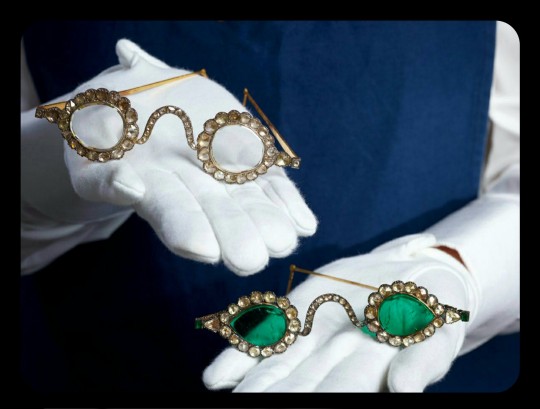
The emerald eyeglasses have long been paired with a second set of spectacles, and they were almost certainly commissioned by the same patron. This second pair is known as "Halqeh-e nur," or the "Halo of Light."
The Halo of Light features lenses that were made from slices of diamond. The diamond lenses were cleaved from a single stone, just like the emerald lenses, with the diamond itself being sourced from a mine in Southern India. It's estimated that the original, uncut diamond would have weighed about 200-300 carats, which would make it one of the largest uncut diamonds ever found.

The lenses are so clear and so smoothly cut that it sometimes looks like they're not even there.
Both sets of spectacles date back to the mid-1600s, and it's generally believed that they were commissioned by a Mughal emperor or prince. The identity of that person is still a bit of a mystery, but it has been widely speculated that the patron was Shah Jahan -- the Mughal ruler who famously commissioned the Taj Mahal after the death of his wife, Mumtaz Mahal. Shah Jahan did rule as the Mughal emperor from about 1628 to 1658.
The emerald and diamond lenses may have been chosen for symbolic, sentimental, and/or cultural reasons, or they may have been chosen simply because they're pretty and extravagant; the original meaning and purpose behind the design is still unclear. Experts do believe that the eyeglasses were designed to be worn by someone, though.
At times, it was believed that the spectacles had spiritual properties, like the ability to promote healing, to ward off evil, to impart wisdom, and to bring the wearer closer to enlightenment. Those beliefs are largely based on the spiritual significance that emeralds and diamonds can have within certain Indic and Islamic traditions -- emeralds may be viewed as an emblem of Paradise, salvation, healing, cleansing, and eternal life, while diamonds are similarly associated with enlightenment, wisdom, celestial light, and mysticism.

The Gate of Paradise and the Halo of Light were both kept in the collections of a wealthy Indian family until 1980, when they were sold to private collectors, and they were then put up for auction once again in 2021. They were most recently valued at about $2 million to $3.4 million per pair.
Sources & More Info:
Sotheby's: Mughal Spectacles
Architectural Digest of India: At Sotheby's auction, Mughal-era eyeglasses made of diamond and emerald create a stir
Only Natural Diamonds: Auspicious Sight & the Halqeh-e Nur Spectacles
The Royal Society Publishing: Cleaving the Halqeh-Ye Nur Diamonds
Gemological Institution of America: Two Antique Mughal Spectacles with Gemstone Lenses
Manuscript: From Satan's Crown to the Holy Grail: emeralds in myth, magic, and history
CNN: The $3.5 million Spectacles Said to Ward off Evil
BBC: Rare Mughal Era Spectacles to be Auctioned by Sotheby's
#history#archaeology#artifact#mughal#india#17th century#art#emerald#diamond#glasses#indian lore#islam#religion#mysticism#indian history#anthropology#spirituality#fashion
5K notes
·
View notes
Text
i'm feeling controversial today so here's another hot take. and before you type away at your keyboards, know that this is all coming from a south asian.
white leftists have got to stop acting like christianity is the only religion that deserves to be criticized and you cannot touch any other religion because that'd be racist and bigoted. because as an indian who's watching my country progress towards hindu nationalism, this attitude doesn't help at all.
white people see hinduism as this exotic brown religion that's so much more progressive but don't know the violence of the caste system, how it others a large portion of the population on the basis of caste, literally branding them as "untouchables". they teach us in school that this problem is a thing of the past but the caste system is still alive and shows itself in violent ways. and that's not even covering how non hindus are treated in the country. muslims especially are being killed, have their houses bulldozed, businesses destroyed, and are being denied housing, our fucking prime minister called them infiltrators and there's this fear among hindu extremists that they'll outnumber the hindus in the country. portraying hinduism as this exotic religion does a disservice to all those oppressed by the hindutva ideology
similarly, white people see buddhism as this hippie religion that's all about peace but have no idea how extremist buddhists in myanmar have been persecuting the rohingya muslims for years and drive them out of the country.
if anything portraying these religions as exotic hippie brown religions is a type of orientalism itself.
and also y'all have got to realize that just because christianity has institutional power in america doesn't mean there aren't parts of the world where they are persecuted on the basis of religion. yes karen from florida who cries christophobia because she sees rainbow sprinkles on a cake is stupid but christian oppression DOES exist in non western countries where they're a minority. pakistani christians get lynched almost on a daily basis over blasphemy accusations. just look up the case of asia bibi, a pakistani christian woman who was sentenced to death on blasphemy charges because of something she said when she was being denied water because it was "forbidden" for a christian and a muslim to drink from the same utensil and she'd made it unclean just by touching it (which is ALSO rooted in casteism and part of pakistani christians' oppression also comes from the fact that a lot of them are dalit but that's a whole other discussion). and that's just one christian group, this isn't even going into what copts, assyrians, armenians etc have faced and continue to face. saying that christians everywhere are privileged because of american christianity actually harms christian minorites in non western countries.
and one last thing because this post is getting too long: someone being anti america doesn't automatically mean they're the good guys. too many times i've been seeing westerners on twitter dot com praise the fucking taliban just because they hate america. yes, the same taliban who banned education for women, thinks women should be imprisomed at home, and consistently oppresses religious and ethnic minorities in afghanistan. yes, america's war on afghanistan was bad and they SHOULD be called out for their war crimes there. no, the taliban are still not the good guys. BOTH of them are bad. you cannot pretend to care about muslims and brown people if you praise the taliban. because guess what? most of their victims are BROWN MUSLIM WOMEN. but of course white libs who praise them don't rub their two braincells together to make that conclusion.
this post has gotten too long and i've just been rambling so the point of this post is: white "leftists" whose politics are primarily america centric should stop acting like criticism of ideologies like hindutva, buddhist extremism, and islamic extremism BY people affected by these ideologies is the same as racism or religious intolerance because that helps literally no one except the extremist bigots. also america is not the centre of the world, just because something isn't happening in america doesn't mean it isn't happening elsewhere
#islamophobes do not fucking touch this post i swear#also talked more about india - and south asia in general - because i'm indian so i can speak on south asian issues more#this post got longer than i intended it#also didn't want to use the term islamist because that term has been primarily used by zionists and islamophobes#tagging all the countries i mentioned here#religion#india#pakistan#myanmar#afghanistan#rebecca talks
383 notes
·
View notes
Photo

Second largest religion in Indian subcontinent
109 notes
·
View notes
Text

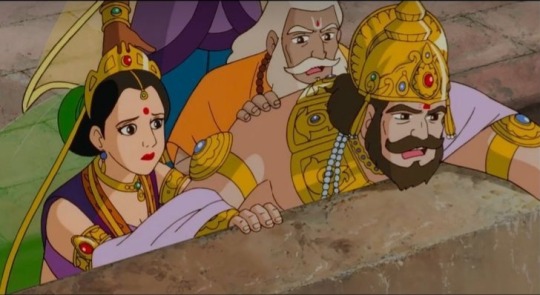

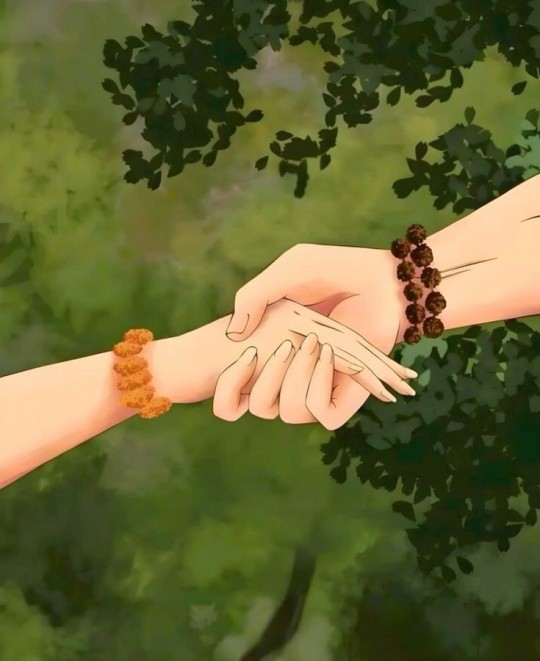






🌸 रघुकुल रीत सदा चली आई, प्राण जाए पर वचन ना जाई 🌸
22 January 2024
#desi tumblr#desiblr#lord rama#siyaram#ram mandir#ayodhya#ayodhyarammandir#indian aesthetic#hinduism#indian culture#vaishnavism#india#religion#true love
431 notes
·
View notes
Text

The avatar Narasimha, ca. 1870s
Via: https://www.metmuseum.org/art/collection/search/857030
94 notes
·
View notes
Text
marauders characters’ ethnicities/religions/languages
just my own HCs so don’t get offended!
jayaram fleamont potter
(tells people to call him j or jamie bc its easier, so everyone assumes his real name is james, and he doesn’t correct them)
indian hindu on his mum’s side (tamil nadu specifically)
effie comes from a rich tamil pureblood family (many pureblood families name their children something greek/latin, thus ‘euphemia’), and teaches jamie hindi, tamil and some greek
his tamil is great and he’s fluent in writing/reading as well as speaking, writing letters to effie from hogwarts in tamil
his hindi is okay, mostly with reading and talking, his writing is pretty limited
his greek is godawful and he’s barely conversational, much to effie’s dismay
(non-practicing) catholic chilean on his dad’s side
monty is (obviously) a potter, and most of his relatives live in chile or south america, but his parents moved to england for hogwarts (didn’t want him going to school on another continent to them)
he’s a practicing hindu with his mum (monty doesn’t really get it because he doesn’t speak a word of hindi so he just smiles and nods)
he speaks english and (chilean) spanish, which he teaches jamie, who speaks/reads/writes it as fluently as his english and tamil
sirius orion black
he is heir of the noble and most ancient house of black so he’s the french-est pureblooded-est guy you’ll ever meet
especially pureblooded because he’s the product of incest (his parents are second cousins) (canon)
the black family are french, owning many estates there, etc., but have lived in england for generations (his great-grandparents migrated and now they only visit france in the summer sometimes)
catholic (receiving NOO criticism here bc this is canon (no its not)) with intense religious trauma and internalised homophobia (not projecting at all whaaaaat)
sort of converts to judaism (ish?) he makes remus explain it all and siri thinks its sooo fascinating so he gets a menorah for the dorm for hanukah and buys a torah to study and remus is so happy
speaks french as his first language, and latin and greek fluently from tutoring, but only started to learn english for hogwarts (is so bad at it in first year omg)
remus yohanan lupin
(I KNOW HIS CANON MIDDLE NAME IS JOHN BUT HE IS SO JEWISH CODED TO ME SO HERE’S THE HEBREW FORM OF JOHN INSTEAD X)
polish-jewish on his dad’s side (lyall was evacuated to wales in ww2, when he was about 10, and hope’s parents looked after him until he graduated hogwarts and started dating hope (they literally adored him and helped raise remus I DONT CARE))
protestant welsh on his mum’s side (didn’t really practice her faith though - just brought them all to church on christmas eve and easter sunday)
interfaith household + being a patrilineal jew (more not fitting in angst for remus guys!)
spoke english and welsh at home, equally fluent (lyall picked up welsh while living with hope’s parents), and hebrew too from his hebrew sunday school
lyall tried (and failed) to teach him polish, as that was his first language, so remus can speak a very basic amount of polish, mostly swearing and children’s lullabies (marlene teaches him more at hogwarts so they can gossip!)
not very orthodox jews, but celebrate jewish holidays and go to the synagogue on sabbath (and he wears a necklace of the star of david that belonged to lyall’s late mother)
pieter daan pettigrew
(anglicised his name for hogwarts because everyone called him p-eye-ter (like actual pie + ‘ter’))
protestant dutch on his mum’s side (but she went to hogwarts!)
protestant english on his dad’s side
parents were ‘born again’ christians so they were very devout (grace before every meal, helping out at church every sunday, bible study every morning, etc)
peter never really believed in any of it, and would often go to jamie’s to avoid having to go
he spoke english with his dad and half-brother, but solely dutch with his mum and his other siblings. he was also taught latin before hogwarts (pureblood things) and absolutely HATED it (he was probably dyslexic and often found himself changing language in the middle of his talking exams)
picked up a fair bit of tamil from jamie and effie (aka his second mum) and absolutely LOVED the potters’ diwali party (literally the highlight of his year)
let me know any other characters i should do!! and if you disagree feel free to leave your HCs in the comments, but please respect that people have different opinions xx
#marauders#james potter#indian james potter#latino james potter#hindu james potter#sirius black#french sirius black#catholic sirius black#remus lupin#jewish remus lupin#welsh remus lupin#wolfstar#remus x sirius#peter pettigrew#dutch peter pettigrew#catholic#hinduism#jewish#protestant#religious trauma#please don’t take these too seriously guys its just fun#dont cancel me#headcanon#harry potter#religion#ethnicity#language
75 notes
·
View notes
Text


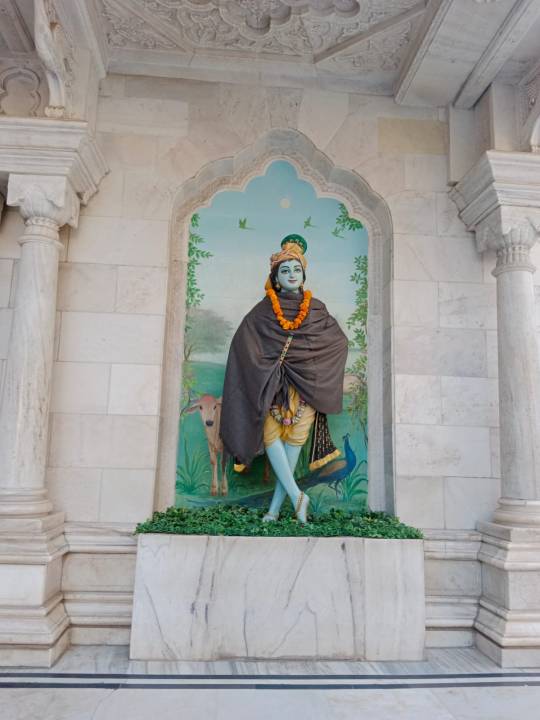







Just a photo dump from my 1 week vrindavan trip :D
#vrindavan#iskcon#hinduism aesthetics#hindu#hindublr#hindutva#religious art#religious imagery#religion#desi people#desi indian#desiblr#desi academia#being desi#desi#desi girl#desi rant#desi shit posting#just girly thoughts#desi love#radharani#radha krishna#radheradhe#hare krishna#krishna#mathura#brijdham#I love this place sm
74 notes
·
View notes
Text
Im soooo weak to when Bond is like casually being used or exploited at his expense for some ostensible Greater Good except the situation doesn't HAVE to come to that, not really, and he's so inured and even numb to it that he barely pays it any mind; meanwhile, Q absolutely minds and is very indignant on his behalf and works overtime to like either try to avert or forestall the situation before it gets to the point where Bond has to dig his own claws into more of his soft underbelly to offer up on the sacrificial alter of politics of all tawdry things, or to manufacture a way in which he does the needless "needful" so as to spare Bond at least one unnecessary additional wound upon his psyche.
bonus if Bond finds out and maybe after being angry or indignant about it - I don't need you to do my job for me, Q, this is what I'm here to do - and either Q tells him/lets slip or he deduces that like, this isn't Q thinking he can't get the job done, this is Q finding him precious and worthy of protecting, and like. he's just very in awe of that and does in fact feel very safe and cherished within the cradle of his Quartermaster's regard
#00q#of like... yes it's constant surveillance. but also it's like. constantly having a companion & constantly having an all-seeing eye#looking out for you and reaching out to influence your life#I'd imagine it's very like religion (*puts a Bond thought bubble on this*)#it's the Take Me to Church-ism of it all#lmao I didn't start this off as a web-weaving but now I'm weaving it into a web#but yeah in this fic - looked it up it's Playing the Part - this other rando agent is like. is he in your ear rn? the Quartermaster?#and the guy is like. I don't know how you handle it‚ being under his watch all the time. I know he's supposed to be your guardian angel but#I hope I never come to his attention‚ I don't want him to care enough to know a thing about me.#and it's sooo so interesting in the context of Q and this like. pathological need for omniscience we often assign him#cuz yeah it COULD be very oppressive and overbearing#but like. I think it complements Bond's Ambiguous Disorders a lot bc it WOULD read to Bond as Caring#like so much of his life doesn't belong to himself anyway so a lot of the puppeting is old hat#but what a novelty to have someone who does it not because they want something from him or because of what he can do for them#but because they care so deeply about *him* as to want to do right by him and look out for his well-being#also sidebar'ing back but like there's a lot stupid about Business English but 'do the needful' is probably one of if not THE dumbest thing#I've ever heard or seen in my life. like. absolute epitome of garbage bullshit bureaucracy-speak nonsense and I know I'm getting into dicey#territory cuz despite whatever origin it may have had it's seen more today as an Indianism. but still like in and of itself it's such#a dumb phrase. and speaks to such a height of bureacracy & it's like. you don't have to say it like that. there are other words you can use#okay anyway. back to 00q#somehow I've brought this into 'blasphemy but make it sexy. as a treat' lmao but yeah... Q as Bond's wrathful & jealous God....#WAIT another web weaving. Ulysses when Bond is like. no not a guardian angel. Q is his patron deity his household god. mm yes *chefs kiss*
76 notes
·
View notes
Text

Kali
#Goddess Kali#Kali#Shiva#Ink on paper#Kohler Foundation#Kalighat#hindu religion#indian art#hindu mythology#art#hindu god#hinduism
97 notes
·
View notes
Text
Modern Hinduism: Embracing Tradition and Change with Omtvlive
Modern Hinduism is a vibrant and dynamic blend of ancient traditions and contemporary practices. As one of the world's oldest religions, Hinduism has evolved significantly over thousands of years, adapting to changes in society while maintaining its core principles. In this blog, we will explore the essence of modern Hinduism, how it differs from traditional practices, and its relevance today. With insights from Omtvlive, we aim to provide a clear understanding of this fascinating subject.
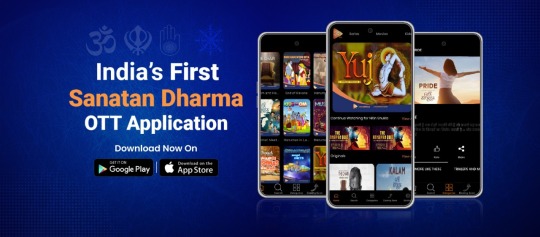
What is Modern Hinduism?
Modern Hinduism refers to the way Hinduism is practiced and understood in the contemporary world. It is a religion that remains deeply rooted in its ancient scriptures and traditions but also embraces new ideas and practices. This adaptation allows Hinduism to stay relevant and meaningful in the lives of its followers amidst the rapid changes of the modern world.
Key Aspects of Modern Hinduism
Continued Reverence for Scriptures Despite the passage of time, the sacred texts of Hinduism, such as the Vedas, Upanishads, Bhagavad Gita, and Ramayana, continue to hold great importance. These texts provide spiritual guidance and moral teachings that are timeless. Modern Hindusm study these scriptures to understand the deeper meanings of life and the universe.
Flexibility in Practices One of the strengths of modern Hinduism is its flexibility. While traditional rituals and ceremonies remain important, many Hindus adapt these practices to fit their contemporary lifestyles. For example, daily prayers (puja) might be performed in simpler forms, and festival celebrations may incorporate modern elements while retaining their spiritual essence.
Focus on Personal Spirituality Modern Hinduism places a strong emphasis on personal spirituality and inner growth. Practices such as yoga, meditation, and mindfulness are widely embraced. These practices help individuals connect with their inner selves and achieve a sense of peace and balance in their busy lives. According to Omtvlive, this focus on personal spirituality is one of the key ways Hinduism remains relevant today.
Social and Ethical Concerns Modern Hinduism addresses contemporary social and ethical issues, emphasizing the importance of dharma (righteousness) in everyday life. This includes promoting environmental sustainability, social justice, and ethical behavior. Many Hindu organizations and leaders actively engage in humanitarian efforts, reflecting the religion’s enduring commitment to compassion and service.
The Role of Technology and Media
Technology and media have significantly influenced modern Hinduism. Platforms like Omtvlive play a crucial role in disseminating spiritual knowledge and connecting Hindus worldwide. Online resources, virtual temples, and social media communities have made it easier for people to access religious content, participate in rituals, and engage with spiritual leaders from the comfort of their homes.
The Global Spread of Hinduism
Modern Hinduism is not confined to India; it has a global presence. The Hindu diaspora has spread to various parts of the world, including North America, Europe, and Southeast Asia. This global spread has led to the blending of Hindu practices with local cultures, creating diverse expressions of the religion. Festivals like Diwali and Holi are celebrated with great enthusiasm worldwide, bringing together people from different backgrounds to appreciate Hindu culture.
Modern Hinduism and Interfaith Dialogue
In today’s interconnected world, interfaith dialogue is essential for promoting mutual understanding and harmony. Modern Hinduism actively participates in such dialogues, fostering respect and cooperation among different religious communities. This openness to other faiths is rooted in Hinduism’s inclusive philosophy, which acknowledges multiple paths to the divine.
Challenges and Adaptations
While modern Hinduism has adapted well to contemporary times, it also faces challenges. The rapid pace of globalization and modernization can sometimes lead to a dilution of traditional values and practices. However, many Hindu leaders and scholars are working to address these challenges by finding ways to preserve the essence of the religion while embracing change.
Omtvlive highlights that education and awareness are key to maintaining the balance between tradition and modernity. By educating young Hindus about their rich cultural heritage and encouraging them to explore their spirituality, the continuity of Hinduism can be ensured for future generations.
The Future of Modern Hinduism
The future of modern Hinduism looks promising as it continues to evolve and adapt. With its emphasis on personal spirituality, ethical living, and social responsibility, Hinduism remains a guiding force for millions. The integration of technology and media will likely play an even greater role in the spread and practice of Hinduism, making it more accessible and inclusive.
According to Omtvlive, the future of modern Hinduism will be shaped by its ability to maintain its core values while embracing innovation and change. This adaptability will ensure that Hinduism remains a living, breathing tradition that speaks to the needs and aspirations of people in the modern world.
Conclusion
Modern Hinduism is a beautiful blend of ancient wisdom and contemporary relevance. It continues to guide its followers with timeless principles while adapting to the changes of modern life. With the help of platforms like Omtvlive, the teachings and practices of Hinduism are more accessible than ever, fostering a deeper understanding and connection among Hindus around the world.
By embracing both tradition and change, modern Hinduism offers a path that is both spiritually enriching and practically relevant, ensuring its enduring significance in an ever-evolving world.
#vedic philosophy#classical hinduism#hindu philosophy#hindu religion philosophy#hindu vedanta#jnana yoga#advaita vedanta philosophy#advaita vedanta in hindi#vaishnava tradition#jain religion#tantric traditions#vedic religion#devotional worship#modern hinduism#vedic scriptures#spiritual realization#dharmic religions#indian religions
0 notes
Text
Dharmic Religionss: A Journey into Ancient Beliefs
Dharmic Religionss is a term used to describe a group of religions that originated in the Indian subcontinent. These include Hinduism, Buddhism, Jainism, and Sikhism. These religions share common beliefs and practices, focusing on the concept of "dharma," which means duty, righteousness, and moral law. Let's explore the fascinating world of Dharmic Religionss and understand how they shape the lives of millions of people.

Hinduism: The Oldest Dharmic Religion
Hinduism is the oldest of the Dharmic Religions, with roots that go back over 4,000 years. It is a complex religion with a variety of gods and goddesses, rituals, and philosophies. The core belief in Hinduism is the idea of dharma, which means living in accordance with one's duty and righteousness. Hindus believe in reincarnation, where the soul is reborn in a new body after death. The ultimate goal is to achieve moksha, or liberation from the cycle of rebirth.
Hinduism has many sacred texts, including the Vedas, Upanishads, and the Bhagavad Gita. These texts provide guidance on how to live a righteous life. Temples, festivals, and pilgrimages are also important aspects of Hindu worship. One popular festival is Diwali, the festival of lights, which symbolizes the victory of light over darkness.
Buddhism: The Path to Enlightenment
Buddhism is another significant Dharmic Religion. It was founded by Siddhartha Gautama, known as the Buddha, in the 5th century BCE. Buddhism teaches that life is full of suffering caused by desire and attachment. To overcome this suffering, one must follow the Eightfold Path, which includes right understanding, right thought, right speech, right action, right livelihood, right effort, right mindfulness, and right concentration.
Buddhists seek to attain Nirvana, a state of ultimate peace and enlightenment. Meditation is a key practice in Buddhism, helping individuals to develop mindfulness and insight. The teachings of the Buddha are collected in the Tripitaka, also known as the Pali Canon.
Jainism: The Path of Non-Violence
Jainism is another ancient Dharmic Religion that emphasizes non-violence (ahimsa) and self-discipline. Founded by Mahavira in the 6th century BCE, Jainism teaches that every living being has a soul and deserves respect. Jains follow five main vows: non-violence, truthfulness, non-stealing, celibacy, and non-possession.
Jain monks and nuns lead a strict ascetic lifestyle, renouncing worldly possessions and practicing intense meditation. Lay Jains also follow these principles, though in a less rigorous manner. Jain temples, known for their intricate architecture and sculptures, are places of worship and meditation.
Sikhism: The Religion of the Gurus
Sikhism is the youngest of the Dharmic Religionss, founded in the 15th century by Guru Nanak Dev Ji. Sikhism emphasizes devotion to one God, equality, and service to humanity. The teachings of the ten Sikh Gurus are compiled in the Guru Granth Sahib, the holy scripture of Sikhism.
Sikhs gather for worship in Gurdwaras, where they participate in prayer, singing hymns, and community service. One key practice in Sikhism is the Langar, a community kitchen where free meals are served to all, regardless of religion or background. This practice embodies the Sikh values of equality and selfless service.
The Influence of Dharmic Religionss
Dharmic Religionss have a profound impact on the culture and daily life of millions of people. They influence art, literature, music, and social customs. Festivals like Diwali, Vesak, Mahavir Jayanti, and Vaisakhi bring communities together, fostering a sense of unity and celebration.
Furthermore, the principles of dharma, non-violence, and compassion taught by these religions contribute to a more harmonious society. The emphasis on meditation and mindfulness has also gained global recognition, promoting mental well-being and inner peace.
Conclusion
Dharmic Religionss offer a rich tapestry of beliefs and practices that guide individuals on a path of righteousness and spiritual growth. Whether it's the ancient rituals of Hinduism, the mindful practices of Buddhism, the non-violent principles of Jainism, or the devotional worship in Sikhism, each religion provides a unique way to connect with the divine and achieve a meaningful life.
Exploring Dharmic Religionss helps us appreciate the diversity and depth of human spirituality. By understanding and respecting these ancient traditions, we can foster greater tolerance and harmony in our world.
For more insights into Dharmic Religions and their impact on modern life, visit omtvlive. Here, you will find a wealth of information and resources to deepen your understanding and appreciation of these profound spiritual paths. Remember, the journey to spiritual enlightenment and inner peace is a continuous process, and Dharmic Religionss offer timeless wisdom to guide us along the way. So, stay curious, keep exploring, and let omtvlive be your companion in this spiritual journey.
#vedic philosophy#classical hinduism#hindu philosophy#hindu religion philosophy#hindu vedanta#jnana yoga#advaita vedanta philosophy#advaita vedanta in hindi#vaishnava tradition#jain religion#tantric traditions#vedic religion#devotional worship#modern hinduism#vedic scriptures#spiritual realization#dharmic religions#indian religions
1 note
·
View note
Text
PSA!!!!!
This is for the people who didn't know they were gay or bi or pan or ace or aro in their childhood.
This is for the people who had crushes which could be deemed straight and then came out as gay later in their lives.
This is for the trans or genderqueer or fluid or nonbinary people who did not experience dysphoria in their agab.
This one is for the people who don't want to take T or E or have gender-affirming surgery but are still trans.
This one is for the sex-positive or sex-neutral aces who are told that they aren't ace because they aren't disgusted by sex.
This one is for anyone who has been told, "You just need to find the right girl/guy!"
This one is for all the queer people who have been told that they cannot be queer because of their religion, race, ethnicity, etc.
This one is for all the queer people who were told that they weren't queer just because they didn't fit into somebody else's idea of what being queer is like.
Nobody can tell you how to be queer. The only one who gets to decide that is YOU. Queer people do not need to bend themselves over backwards to make others comfortable.
We have always been here and we will continue to be here, and everyone else will just have to learn to accept that.
#I'm tired of this bullshit#just because i only had crushes on boys as a child it does not mean I am not bisexual#Just because i never experienced dysphoria in my body as a child it does not mean I am not genderfluid#people tell me i cant be queer because I'm indian or because I'm hindu#and i want to scream that my religion has nothing to be with my queerness#gay#lesbian#bisexual#aromantic#asexual#aroace#trans#genderfluid#genderqueer#pansexual#non binary
472 notes
·
View notes
Text
"caste politics won in ayodhya"
stfu and fuck you.
Do not throw around words, not when people can throw it back at you, that most of the urban city seats won by BJP are from the votes of upper caste Hindus.
but I won't go around saying that, because you don't get to decide who votes for who.
Do you believe that a temple is enough to fulfill people's livelihood?
Do not claim to know the condition and needs of Ayodhya better than the people of Ayodhya.
#indian elections#indpol#elections 2024#“caste politics in ayodhya” this statement has me screeching#do not talk like bjp did not fight this election on the basis of religion
143 notes
·
View notes
Text
💀Goddesses of death💀
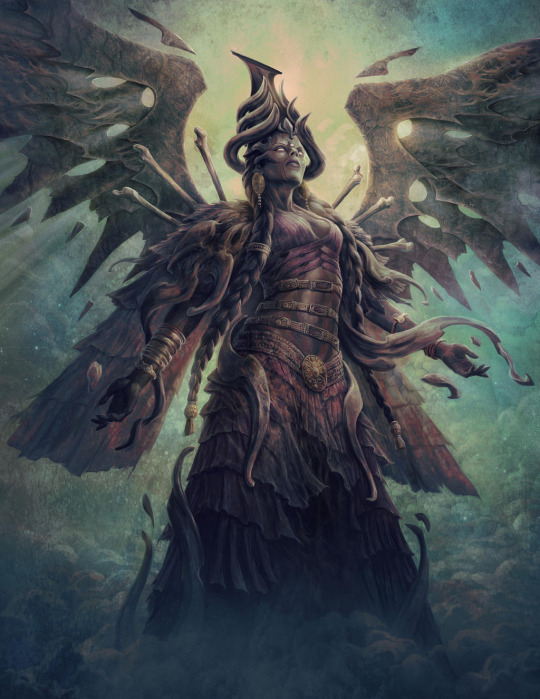
Ereshkigal: Mesopotamian goddess of death, the dead, and the underworld.
Ereshkigal is the queen of the underworld, the keeper of balance, the punisher of evil & maintains order against chaos. She may have also been associated with the earth & the waters of life in Mesopotamian legend. She was associated with the city of Kutha and featured in the myth of Inanna's Descent to the Underworld. She was also connected to other deities such as Nergal, Ninazu, and Ningishzida. Ereshkigal was said to be the sister of Inanna.

Oya: African Goddess/orisha of death, storms, winds & thunder.
Oya is a powerful goddess/orisha in Nigeria who controls storms and death and is married to the thunder god, Shango. She is a shape-shifter who often appears as a mortal woman or animal while overseeing justice and bringing sudden change. She is also a guardian of women and the dead, able to call forth death or delay it. Oya is associated with rebirth and magic, and her favorite colors are maroon and copper.
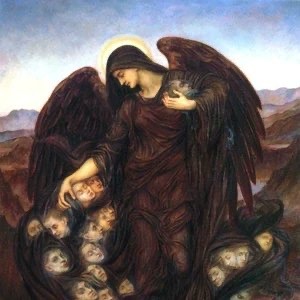
The Keres: Greek goddesses of Death, bloodshed & violence.
The Keres were female death spirits and goddesses who personified violent death. They were drawn to bloody, intense deaths on battlefields and were daughters of Nyx, Goddess of Night. They did not have the power to kill but would wait and then feast on the dead. They were described as dark beings with gnashing teeth & claws, with a thirst for human blood. They would hover over the battlefield and search for dying/ wounded men.
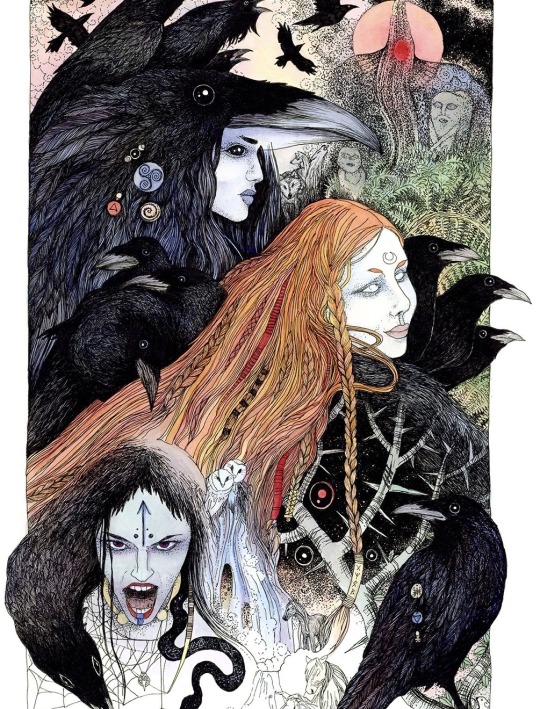
The Morrigan: Irish Goddess of death, fate, war & sovereignty.
The Morrígan, also called the Phantom Queen, is a bewitching goddess associated with war and fate, often appearing as a crow, encouraging bravery and strength in battle, & foretells doom or victory. The Morrígan is often described as a trio of sisters, representing the goddess's role as a guardian and warrior. She can appear in many forms like an old woman, a crow, a beautiful sorceress, or a fearsome creature.

Mictecacihuatl: Aztec Goddess of death & the underworld.
Also known as the Lady of the Dead, Alongside Mictlantecuhtli, her consort, she rules over Mictlán, the lowest Aztec underworld realm. She guides the departed souls on their transformative journey from life to the afterlife and embodies the profound duality of existence. The Dia de los Muertos is a vibrant festival that allows families to honor deceased loved ones with ofrendas and calavera imagery, inspired by Mictecacihuatl, who is now called Santa La muerte.
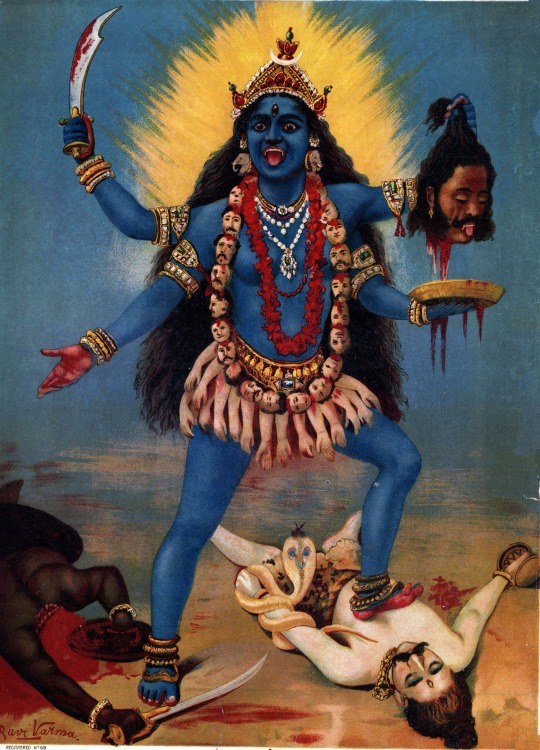
Kali-ma: Hindu Goddess of destruction, death, change & time.
Kali-ma is the wrathful & protective force of Shakti (energy), She's a caring mother to her devotees/innocent people and the destroyer of evil, she expresses the dual nature of the destruction that must come before new beginnings. Kali ma embodies the power of all, transcending good & evil to protect her people against negativity. Kali ma is Mother Nature, primordial, nurturing, and devouring, She is vested in freeing beings, granting salvation.
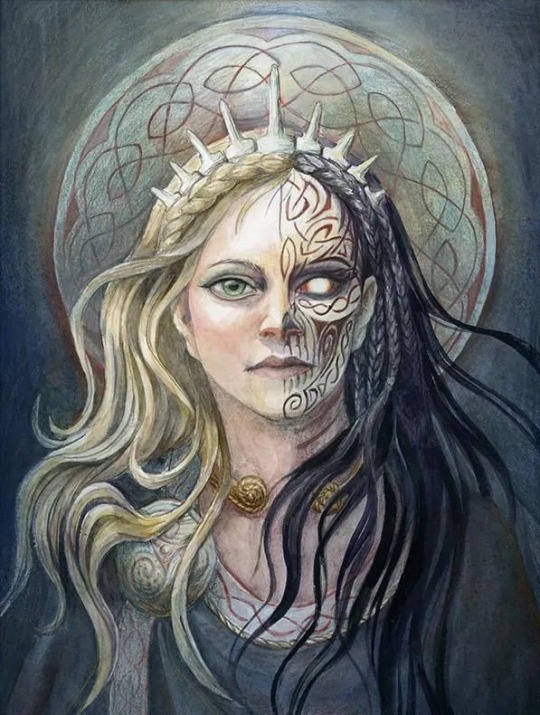
Hel: Norse Goddess of death, the underworld & decay.
Hel, the half living and half dead goddess, is one of Loki's children, and rules over the realm of the dead, she mostly receives those who died of illness or old age in her realm. Hel is often depicted as a fearsome figure, and in Her realm, Helheim, is considered one of the nine worlds in Norse cosmology and is located in the lowest part of the universe. In the events of Ragnarok, Hel plays a crucial role. It is foretold that she will lead an army of the dead to fight against the gods.

Morana: Slavic Goddess of death, winter, magic & dreams.
Morana is a Slavic goddess associated with seasonal agrarian rites based on the idea of death and rebirth of nature. the death of Morana at the end of winter becomes the rebirth of Spring of the Goddess Vesna, representing the coming of Spring, joy & life. She is still worshipped to this day and is often described as a vengeful, powerful goddess. She is married to the spring/love God Yarilo but their relationship is not seen as healthy.

Izanami: Japanese Goddess of Death, darkness & creation.
Izanami is a Shintō creation mother goddess who became the Japanese goddess of death after she died while giving birth. Her name, Izanami, means ''the female who invites.''. She can create many lands and other divine beings, has the power of death and could command gods/spirits of the underworld. Izanami & Izanagi are the creators of the Japanese archipelago and the creators of the powerful deities Amaterasu, Tsukuyomi, and Susanoo.
#religion#religions#mesopotamian#mesopotamian mythology#african mythology#greek mythology#Hellenism#irish mythology#celtic mythology#aztec mythology#Hinduism#hindu mythology#indian mythology#norse mythology#slavic mythology#japanese mythology#Shinto#goddesses#Ereshkigal#oya#the keres#the morrigan#morrigan#Mictecacihuatl#Kali ma#hel#morana#Izanami#Shakti#lotus list
59 notes
·
View notes